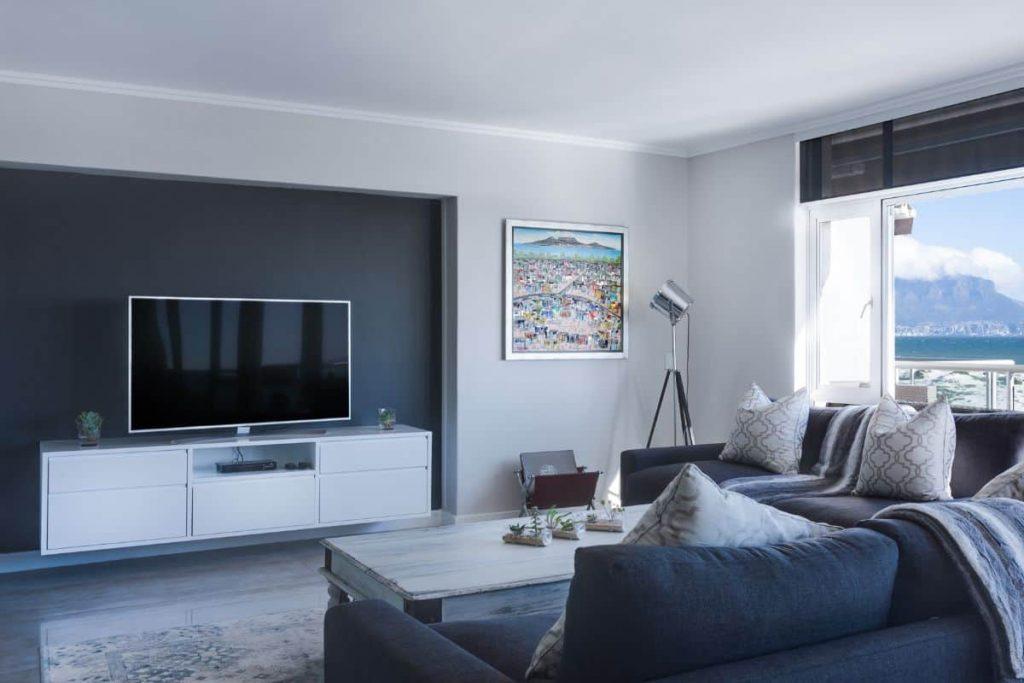If you’re looking to hide your subwoofer in your living room, there are a few different options you can try. One is to place it behind a piece of furniture. Another is to put it in a cabinet or closet. You can also try putting it under a table. Whichever option you choose, make sure the subwoofer is properly ventilated so it doesn’t overheat.
Why you should hide the subwoofer in the living room?
There are a few reasons for why you might want to hide your subwoofer in your living room. One reason is that subwoofers can be large and bulky, and taking up valuable space in your living room. Another reason is that subwoofers can be unsightly, and you may want to keep them out of sight. Finally, subwoofers can produce a lot of noise, and you may want to keep them out of the way to avoid disturbing your neighbors.
What is a subwoofer?
A subwoofer is a loudspeaker that is designed to reproduce low-pitched audio frequencies, typically below around 80 Hz. These frequencies are also known as “bass” frequencies. Subwoofers are typically used in home theater systems, car audio systems, and PA systems.
Types of Subwoofers
There are three main types of subwoofers: sealed, ported, and passive. Sealed subwoofers are the most common type and are typically more compact than their ported and passive counterparts. Ported subwoofers are larger and require more power to operate, but they can produce more bass than sealed subwoofers. Passive subwoofers are the largest type of subwoofer and are typically used in professional audio applications.
How to hide a subwoofer in your living room

There are a few ways to hide a subwoofer in your living room. One way is to put it behind a piece of furniture. Another way is to put it in a corner. You can also put it in a cabinet or closet.
One way to hide a subwoofer is to put it behind a piece of furniture. This will allow the sound to be directed towards the furniture and away from the listener. Another way to hide a subwoofer is to put it in a corner. This will allow the sound to be diffused and will not be as direct. You can also put it in a cabinet or closet. This will allow the sound to be directed towards the front of the room and away from the listener.
Pros and Cons of the various ways to hide a subwoofer
There are many ways to hide a subwoofer, each with its own set of pros and cons.
Hiding a subwoofer behind a piece of furniture or in a cabinet is a great way to keep it out of sight and improve the aesthetics of your room. However, this can limit the airflow around the subwoofer and cause it to overheat, potentially damaging the unit.
Placing a subwoofer under a couch or bed is another popular option. This helps to save space and can make your subwoofer less noticeable. However, it can also make it more difficult to access the subwoofer if you need to make any adjustments.
Finally, some people choose to put their subwoofer in another room entirely. This can help to reduce the amount of noise in your main living space and prevent the subwoofer from taking up valuable real estate. However, it can also make it more difficult to hear the subwoofer when it is in use.
How do I select a subwoofer?
There are a few things to consider when selecting a subwoofer:
Size: How big is your living room? You’ll want to make sure the subwoofer you select will fit comfortably in the room.
Power: How much power do you need? If you have a large living room, you’ll need a more powerful subwoofer.
Budget: How much money are you willing to spend? Subwoofers can range in price from a few hundred dollars to a few thousand dollars.
Style: What style of subwoofer do you want? There are floor-standing subwoofers, bookshelf subwoofers, and even subwoofers that can be hidden away.
Once you’ve considered all of these factors, you can start narrowing down your options and choosing the perfect subwoofer for your living room.
Frequently Asked Questions [FAQs]
How do I choose the right location for my subwoofer?
The best location for your subwoofer will depend on the size of your room and the layout of your furniture. You want to place the subwoofer in a spot where it will be out of the way but still have good access to the rest of the room.
How do I properly set up my subwoofer?
There are a few things you need to do to properly set up your subwoofer. First, you need to find the right location for it. Once you have the subwoofer in the right spot, you need to connect it to an amplifier. Finally, you need to adjust the settings on the amplifier to get the best sound quality.
What type of subwoofer should I buy?
When it comes to choosing a subwoofer, there are many things to consider. The size and power of the subwoofer are important factors to take into account, as well as the type of subwoofer. There are three main types of subwoofers: active, passive, and powered. Active subwoofers require an external amplifier, while passive subwoofers do not. Powered subwoofers have an internal amplifier and do not require an external amplifier. The type of subwoofer you choose should be based on your individual needs and preferences.
How much should I spend on a subwoofer?
There is no simple answer to this question as it depends on a number of factors, including the type and size of your vehicle, the type of music you listen to, and your budget. However, as a general rule of thumb, you should expect to spend at least $100 on a quality subwoofer. If you have a larger vehicle or you want to be able to really feel your music, you may want to spend closer to $300.
Do I need an amplifier for my subwoofer?
Amplifiers are not required for subwoofers, but they are recommended. Subwoofers are typically low-powered and do not require a lot of power to operate. However, an amplifier will help to ensure that your subwoofer receives the proper amount of power and produces the best possible sound quality.
Conclusion
A subwoofer can be a great addition to any home theater system, but they can also be a bit of an eyesore. There are a few different ways that you can hide your subwoofer in your living room so that it doesn’t stick out like a sore thumb. You can either build a custom cabinet for it, or you can hide it behind a piece of furniture. If you have the space, you can also put it in a closet. Whichever method you choose, make sure that you have proper ventilation for your subwoofer so that it doesn’t overheat.




